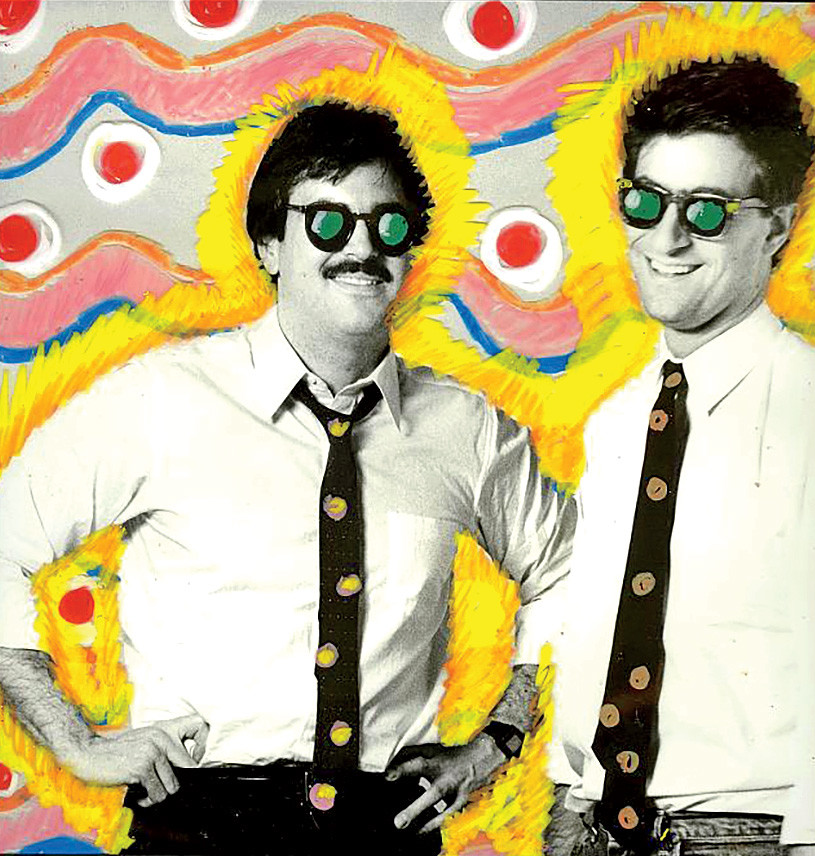From the moment they met at Columbia’s radio station, Alan Goodman ’74CC and Fred Seibert were, says Goodman, “attached at the hip.” WKCR was their workplace, their clubhouse, their study hall, the underground temple where they shared their love for Charles Mingus and Duke Ellington ’73HON, for R&B, and for the medium of radio. They hosted shows, organized on-campus jazz concerts, and explored avant-garde music in downtown lofts. When Seibert started his own record label in 1972, putting out jazz albums, he hired Goodman to write the liner notes.
Goodman went on to film school, then joined the advertising department at CBS Records. Seibert, who left Columbia a few credits shy of graduating (his devotion to the station took a toll on his studies, he admits), kept up his label, recording greats like Hank Jones and Cecil Taylor ’03HON. But he was losing money, and in 1980 he took a job with Warner-Amex Satellite Entertainment, doing promos for their new cable network, the Movie Channel. Months later, when his boss, Bob Pittman, announced that the company was starting something called the Music Channel, Seibert wanted in. “I said, ‘I know more about music than anyone in the building!’” he recalls. Pittman, convinced, expanded Seibert’s duties.
Meanwhile, Seibert needed short animated promos for the Movie Channel. Knowing that Goodman had taken — and dropped — an animation class in film school, he hired him as a consultant. Goodman, who had grown tired of his ad job, was thrilled. No sooner had he set up in the corner of Seibert’s Midtown office than Pittman came in and told them of a convention the following week at the Hilton. With cable television on the rise, companies would regularly pitch their networks to cable providers, and Pittman wanted a short video to billboard the new music channel, now renamed Music Television or “MTV.”
“Fred explained that we needed to show that MTV was ‘music on television that works like radio,’” Goodman says. “I got it immediately: rotations of songs in the form of videos.”
For the Hilton gig, Goodman suggested they riff on the fact that MTV would be the first TV channel in stereo: they could bounce the announcer’s voice between the left and right channels. As the hotel’s built-in sound system was inadequate, they called WKCR alumnus Andy Setos ’71SEAS, chief engineer at Warner-Amex, who rigged up a big-screen projection system and stacks of speakers. The team showed three videos and got a standing ovation. Pittman put Seibert and Goodman, still in their twenties, in charge of creative direction.
“We had a real sense that MTV was ours,” says Goodman, “and we were going to run it the way we wanted.”
With the launch scheduled for August 1, 1981, the duo needed a logo. They enlisted a small design studio in the Village, and after hundreds of sketches and much feuding with the executives — and with time running out — they seized on the last sketch they saw: a large block-letter M, with “TV” spray-painted on. Marketing asked for corporate colors, but Seibert had another idea: since music was always changing, the colors and patterns of the letters should change too. Why not use all the sketches?
MTV also needed ten-second network IDs. Seibert wanted footage from television’s greatest moment — the moon landing. He and Goodman secured film and hired animators and composers. The finished product showed a rocket lifting off and Buzz Aldrin standing next to the flag, on which the logo flashed to distorted guitar chords.
On the night of July 31, 1981, the whole team went to a bar in Fort Lee, New Jersey, to watch the launch of MTV, which was not yet available in New York. At a minute past midnight, the rocket went up, the flag was planted, and the future arrived. “It was a shocking moment,” Goodman says. “We knew instantly that we had created something for the ages.”
In 1983, Seibert and Goodman formed their own company, Fred/Alan. Keeping MTV as a client, they added Nickelodeon (and created Nick at Nite) and launched VH-1 and Comedy Central. Today they run separate ventures — Seibert in production, Goodman in blockchain technology — and remain close friends.
Goodman still remembers that day in August 1970, his first week on campus, when he rang the bell at WKCR, hoping to work at the station. “Fred was the one who opened the door,” Goodman says. “He’s been opening doors for me ever since.”



